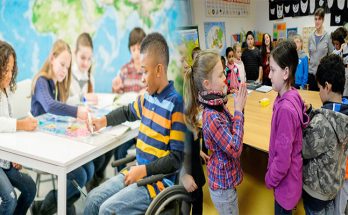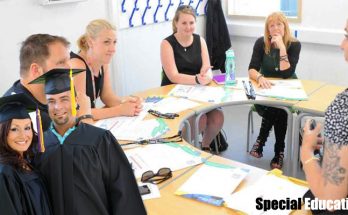Inclusive education requires teachers to cater to the diverse learning needs of their students. For teachers working in special education programs, it’s essential to employ differentiated instruction to meet the unique needs of each student. Differentiated instruction involves adapting teaching methods and materials to account for differences in learning styles, abilities, and interests. Let’s explore some practical special education examples of differentiated instruction that teachers can use to support their students.
1. Flexible Seating:
Flexible seating allows students to have more control over their learning environment, helping them focus and learn better. For instance, some students may benefit from sitting on a cushion, a wobble cushion, or an exercise ball instead of a regular chair. Allowing students who benefit from movement to move around the classroom or take walking breaks can also help them focus for longer periods.
2. Use of Visual Aids:
Visual aids can help students with special needs understand the lesson better than traditional lectures. For instance, using graphic organizers, visual schedules, and picture cards can help students with autism spectrum disorders, ADHD, and learning disabilities better comprehend the lesson.
3. Multi-Sensory Instruction:
Multi-sensory activities are effective in helping students with special needs build strong connections between language and their senses. Teachers can use hands-on activities to teach complex concepts or work on sensory input through tactile activities like finger painting, sand, and water play. Multi-sensory activities can help students with diverse needs develop mastery and retention of critical concepts.
4. Peer Tutoring:
Pairing students with special needs with peers who can provide support and read aloud stories, for example, can help engage students in the learning process. Peer tutoring allows students to learn from each other, receive targeted developmental instruction, and develop positive social connections with peers.
5. Providing Multiple Entry Points:
Providing multiple entry points into the same lesson helps cater to the different learning styles and interests of students. Teachers can differentiate instruction by making the same content available in various formats, including audio, video, and text-based resources. This approach enables students to select the content that aligns with their learning preferences, promoting independent, self-directed learning.
6. Assistive Technology:
Assistive technology such as text-to-speech technology, speech-to-text, and electronic spell checkers can help students with special needs overcome barriers to learning in a more straightforward and more efficient way. Assistive technology helps students focus on learning as opposed to struggling with their disabilities or learning challenges.
Differentiated instruction in special education programs is crucial for supporting the unique needs of students with special needs. By implementing practical strategies such as flexible seating, visual aids, multi-sensory instruction, peer tutoring, providing multiple entry points, and assistive technology, teachers can ensure students receive an inclusive, high-quality education. By creating a meaningful curriculum that accommodates diverse learning styles and abilities, teachers can create a positive and successful learning environment for all students. Embracing differentiated instruction will ultimately make for better outcomes for all students, supporting diverse learners’ needs while promoting an inclusive and welcoming classroom culture.





